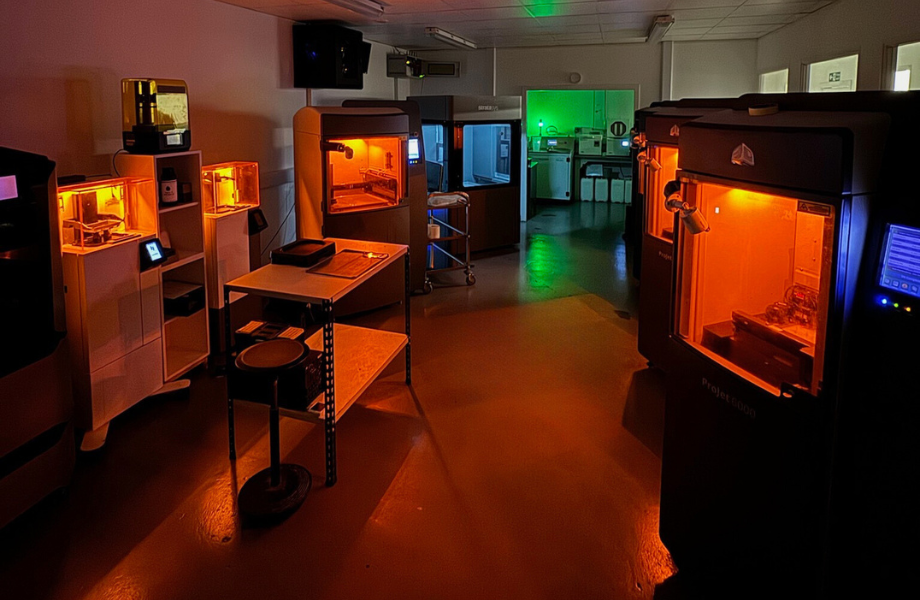In modern manufacturing, jigs and fixtures are essential tools for ensuring accuracy, repeatability, and efficiency. However, producing traditional jigs and fixtures, especially for complex or customised applications, can be costly and time-consuming. 3D printing offers a transformative solution, allowing engineers to create intricate, tailored jigs and fixtures quickly and efficiently.
Advantages of 3D Printing for Jigs and Fixtures
Complex Customisation
Every project is unique, and the ability to customise jigs and fixtures to meet specific production requirements is invaluable. 3D printing allows engineers to design complex, application-specific jigs and fixtures that can accommodate non-standard shapes, geometries, and materials. Whether supporting complex part assembly, ensuring precise alignment, or holding unusual shapes in place, 3D-printed jigs and fixtures offer a level of flexibility not achievable through traditional methods.
Rapid Prototyping and Short Lead Times
Time is often of the essence in product design and development. Traditional jig and fixture production methods can be slow, with extended lead times due to design, machining, and assembly. With 3D printing, engineers can quickly iterate, test, and refine their designs. The rapid prototyping capabilities of 3D printing help reduce the time it takes to develop and deploy jigs and fixtures.
Cost-Effective Low-Volume Production
3D printing excels in low-volume production runs by eliminating the need for expensive machining processes and reducing material waste. This makes it a cost-effective solution for producing small batches of highly customised jigs and fixtures that meet the specific needs of a project.
Optimised Design for Ergonomics and Functionality
Engineers can leverage the design freedom of 3D printing to optimise jigs and fixtures for better ergonomics and functionality. By incorporating lightweight structures, textured surfaces for better grip, or integrated assembly aids, 3D-printed jigs and fixtures can be fine-tuned to enhance ease of use and operator efficiency. Moreover, 3D printing allows for complex internal channels and undercuts that improve the overall performance of the fixture, which might be impossible or cost-prohibitive with traditional manufacturing techniques.
Material Variety
3D printing offers a wide variety of materials, each with specific properties that make them suitable for different jig and fixture applications. From tough, durable polymers for high-wear fixtures to flexible materials for grips and protective surfaces, the choice of material can be tailored to the specific requirements of the fixture. This material versatility ensures that the fixture performs optimally under the conditions of its intended use, whether it’s holding, aligning, or guiding components during assembly.
3D Printing Processes for Jigs and Fixtures at Prototype Projects
At Prototype Projects, we offer a range of 3D printing technologies that support the creation of complex jigs and fixtures. Here’s a brief overview of the processes we offer, and how each can be applied to tooling production:
Stereolithography (SLA)
SLA produces highly detailed, smooth-surfaced parts that are ideal for creating jigs and fixtures requiring precision and fine detail. SLA’s ability to achieve tight tolerances makes it perfect for applications where accuracy is critical.
Selective Laser Sintering (SLS)
SLS is renowned for its strength and durability, making it ideal for functional jigs and fixtures used in demanding environments. SLS’s ability to create parts without the need for support structures also makes it suitable for producing intricate, complex designs.
Digital Light Projection (DLP)
With its fast production speed and excellent resolution, DLP is a great option for producing small, detailed jigs and fixtures quickly. DLP’s high-performance resins also ensure that the fixtures meet specific mechanical or thermal requirements.
PolyJet
Known for its ability to print in multiple materials, PolyJet is particularly useful for creating jigs and fixtures that require a combination of flexible and rigid elements. This makes it ideal for fixtures that need to hold delicate parts or include soft-touch features for gripping.
PµSL (Projection Micro Stereolithography)
PµSL is a specialised process for producing ultra-fine, micro-scale fixtures. For industries requiring high precision at small scales, such as electronics or medical devices, PµSL can produce fixtures that meet the tightest tolerances and exacting standards.
Real-World Applications of 3D-Printed Jigs and Fixtures
Assembly Aids
Jigs designed to hold components in place for assembly can be 3D printed with complex geometries, ensuring that even irregularly shaped parts are securely held for assembly operations.
Inspection Fixtures
For quality control, 3D-printed fixtures can be used to hold or position parts for inspection, ensuring repeatability and accuracy during measurement and testing processes.
Holding and Positioning Tools
In processes such as welding or machining, 3D-printed fixtures can provide a lightweight yet strong solution for holding parts in place, allowing for more precise operations and reduced operator strain.
Conclusion
3D printing is highly recognised for its ability to streamline the production of jigs and fixtures. It offers fast lead times, low costs and great design flexibility. For design engineers, the ability to produce customised, complex jigs and fixtures efficiently makes 3D printing an invaluable tool in optimising production processes.
At Prototype Projects, our advanced 3D printing capabilities—SLA, SLS, DLP, PolyJet, and PµSL—enable us to create tailored jigs and fixtures that meet the specific needs of each project. Whether you need a fixture for assembly, inspection, or another purpose, we have the expertise and technology to bring your designs to life quickly and cost-effectively.
Talk to us
To find out more about jigs and fixtures, our 3D Printing capabilities, or more, please contact us on 01763 249760.



